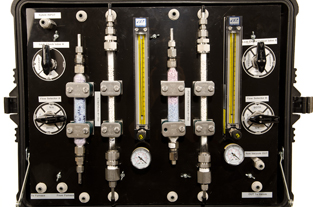
Carbon-14 Measurement for Nuclear Power Plants
The U.S. Nuclear Regulatory Commission requires that operators of nuclear power plants measure the amount of the radionuclide carbon-14 in their gaseous effluents. A proposed new ASTM standard will aid plants (and other facilities at which fission reactions or spent fuel processing takes place) in making these measurements.
WK36397, Practice for Sampling of C-14 in Gaseous Effluents, is being developed by Subcommittee D19.04 on Methods of Radiochemical Analysis, part of ASTM International D19 on Water.
Robert Litman, Ph.D., an independent consultant and D19 member, says the chemical form of carbon-14 in effluents may be organic (as short chain aliphatic hydrocarbons), inorganic (as carbon dioxide) or as particulate matter. It is essential to know which form of C-14 is being released.
"Originally, it was assumed that all C-14 was released as inorganic carbon, which can have significant uptake locally to where it is released," says Litman. "Through measurements at several different nuclear facilities using this proposed standard practice, and other practices similar to it, it was discovered that the chemical form of C-14 may be as high as 95 percent organic carbon, which has a lower dose consequence compared to inorganic carbon."
Interested participants are invited to contribute to the ongoing development of WK36397.
CONTACT Technical Information: Robert Litman, Radiochemistry Laboratory Basics • The Villages, Fla. • Phone: 352-633-8444 | ASTM Staff: Alyson Fick • Phone: 610-832-9710
 SN Home
SN Home Archive
Archive Advertisers
Advertisers Masthead
Masthead RateCard
RateCard Subscribe
Subscribe Email Editor
Email Editor